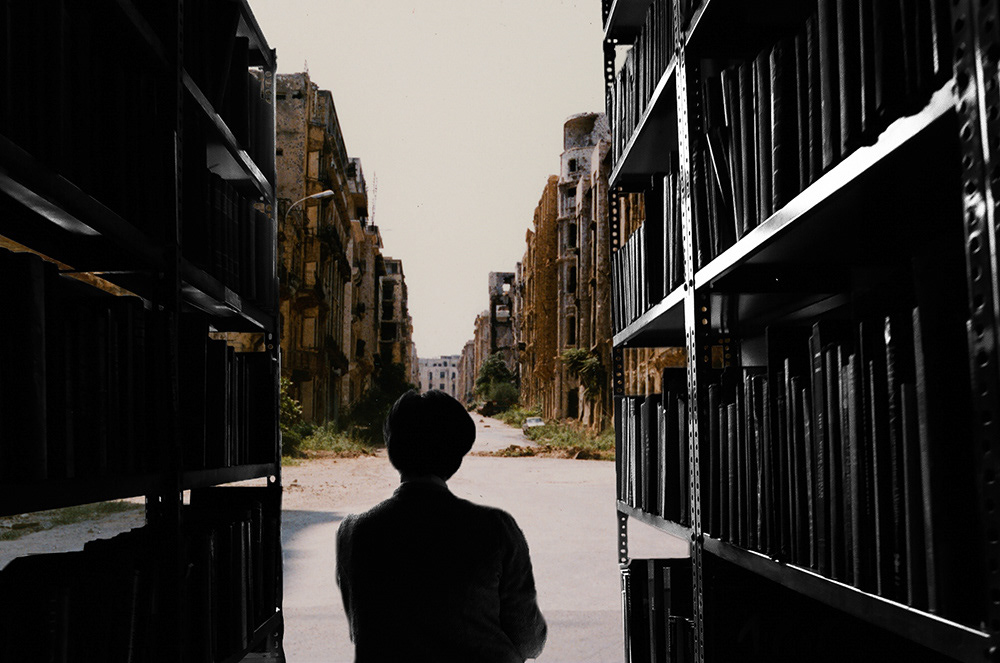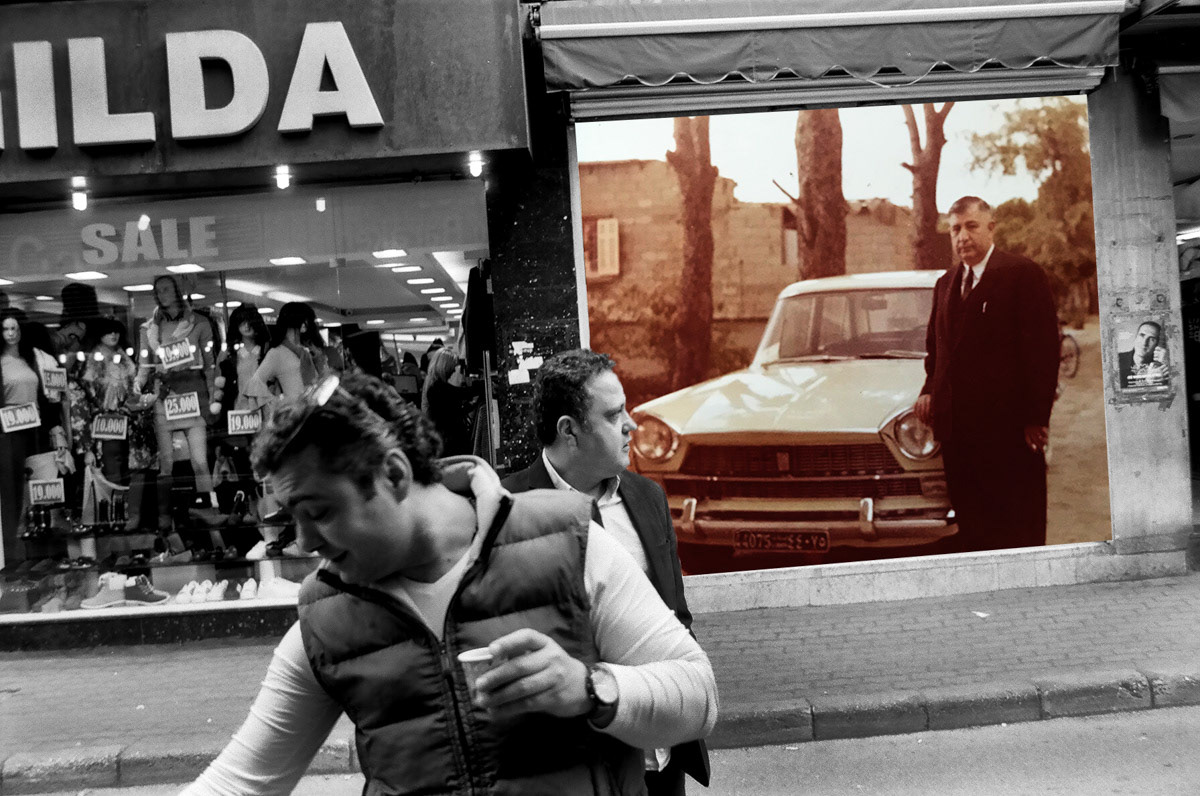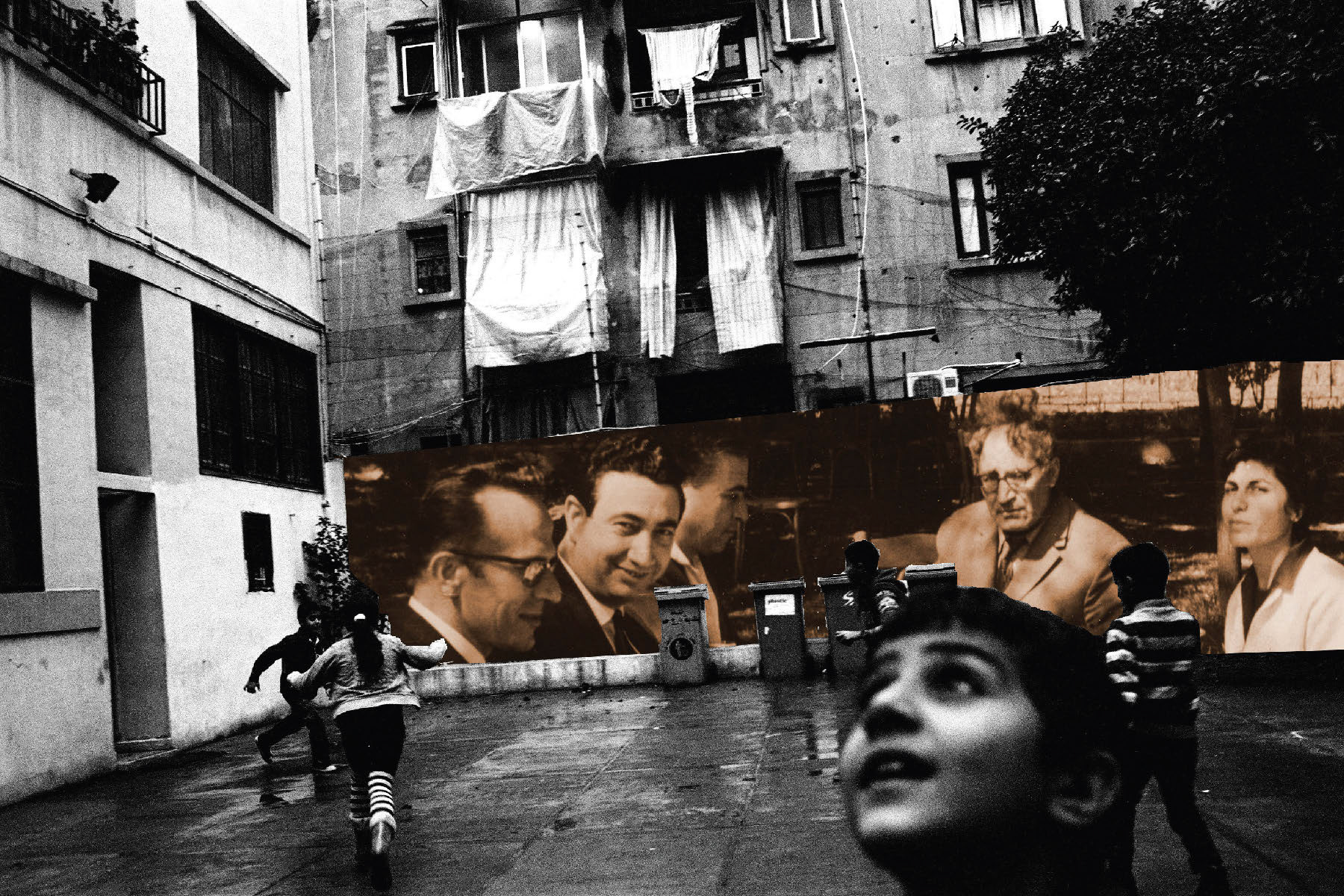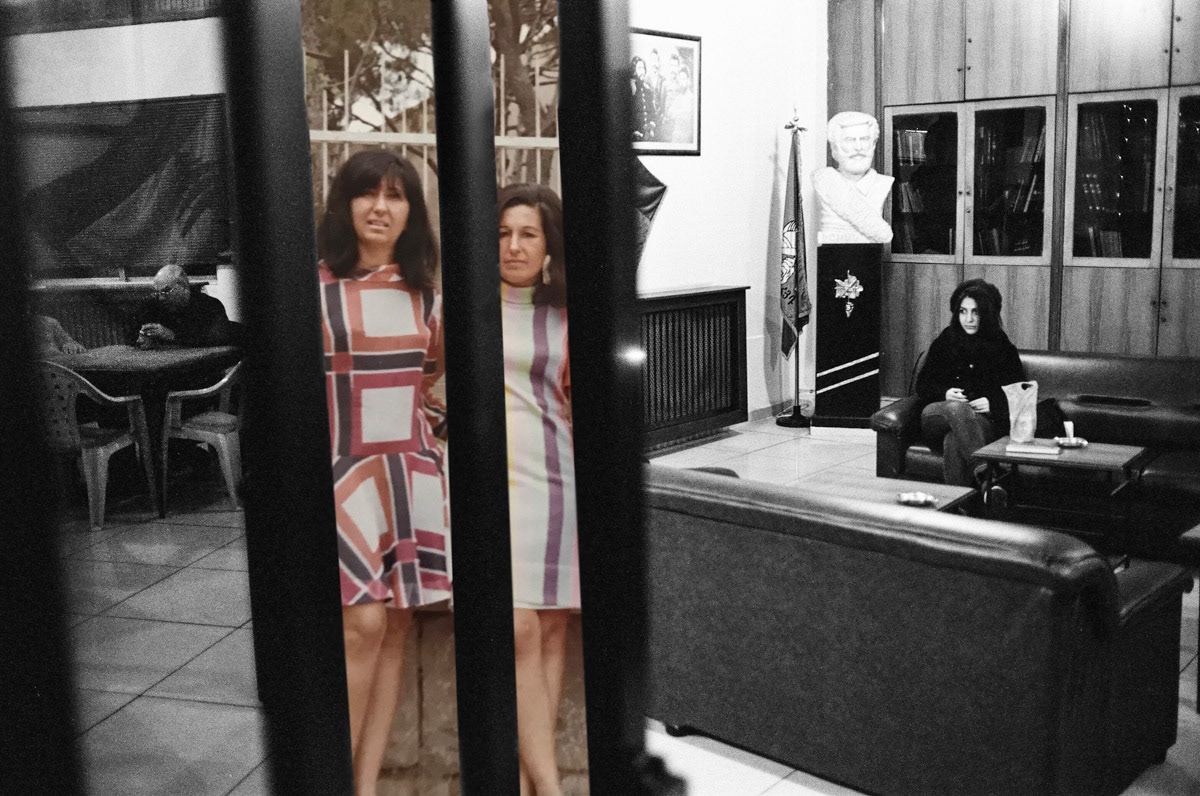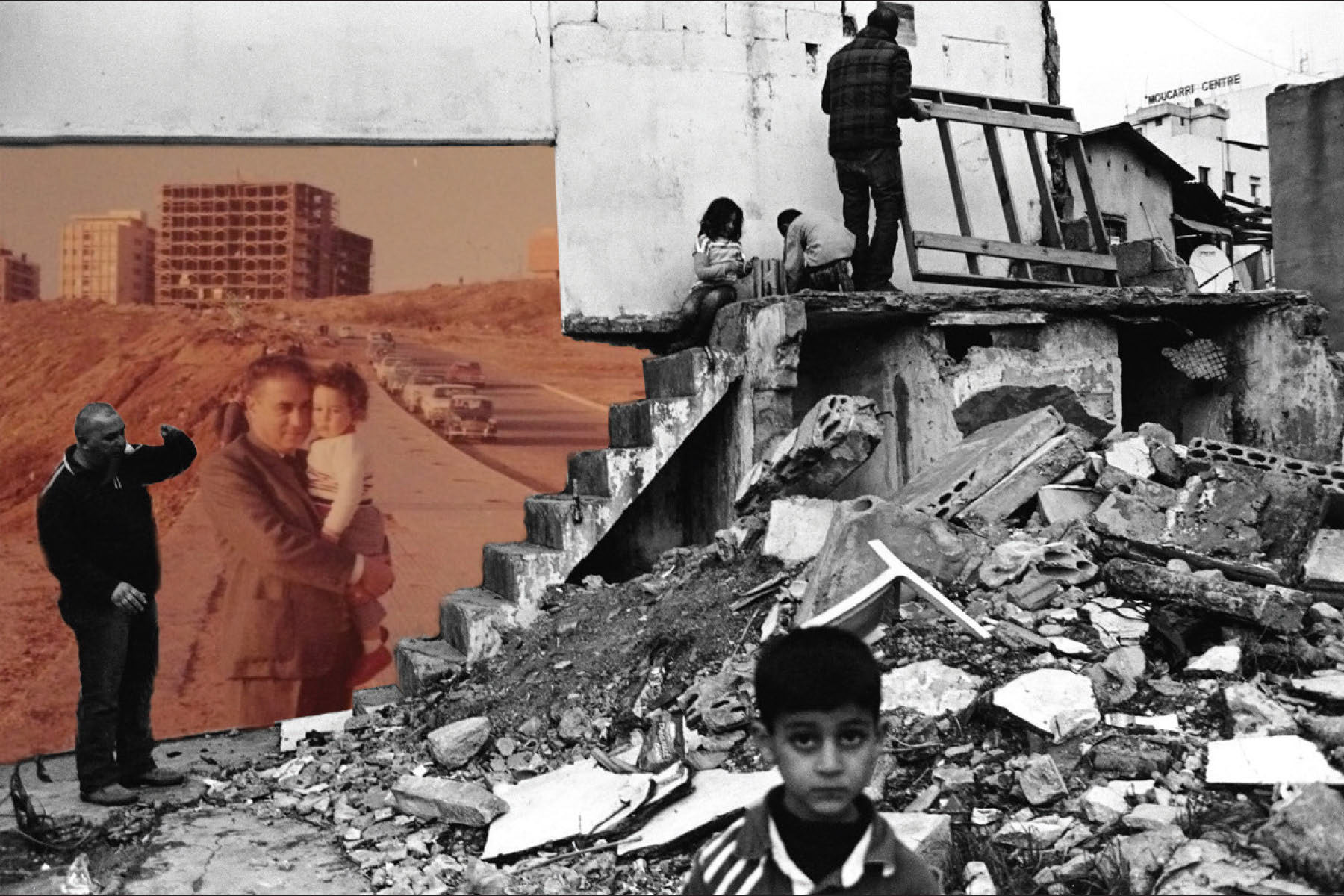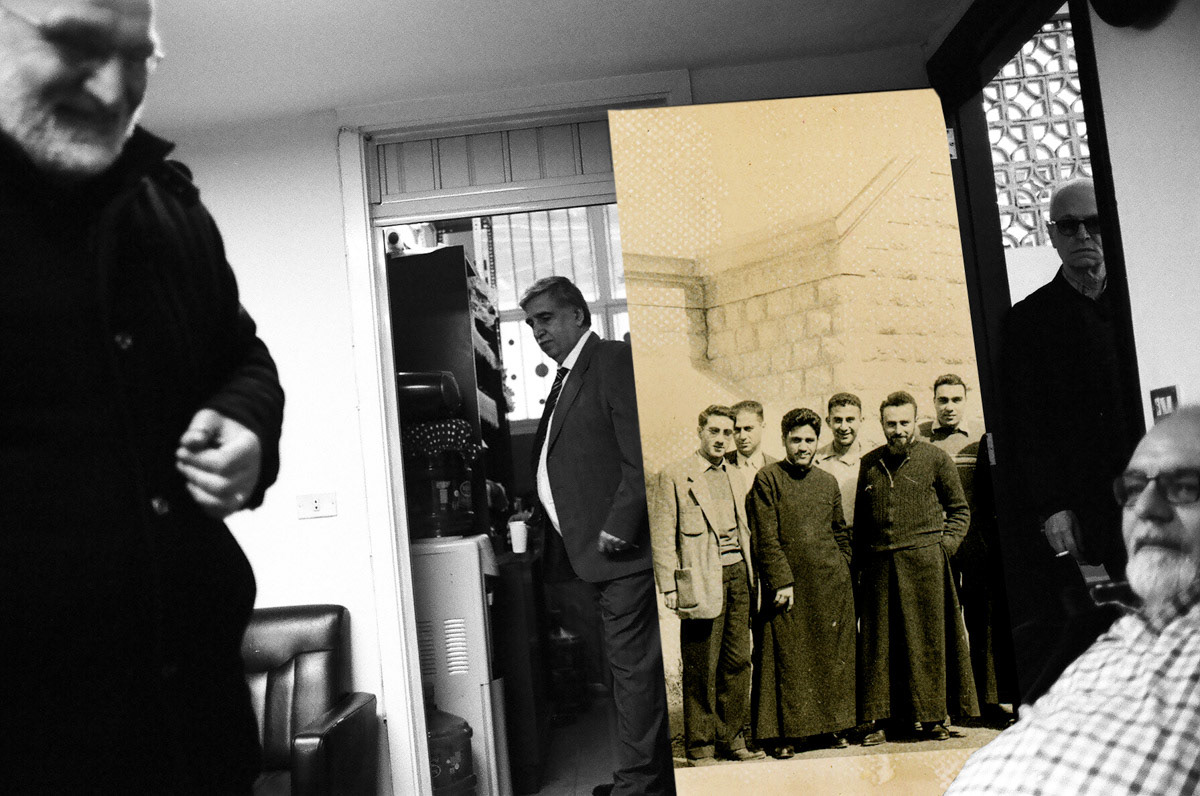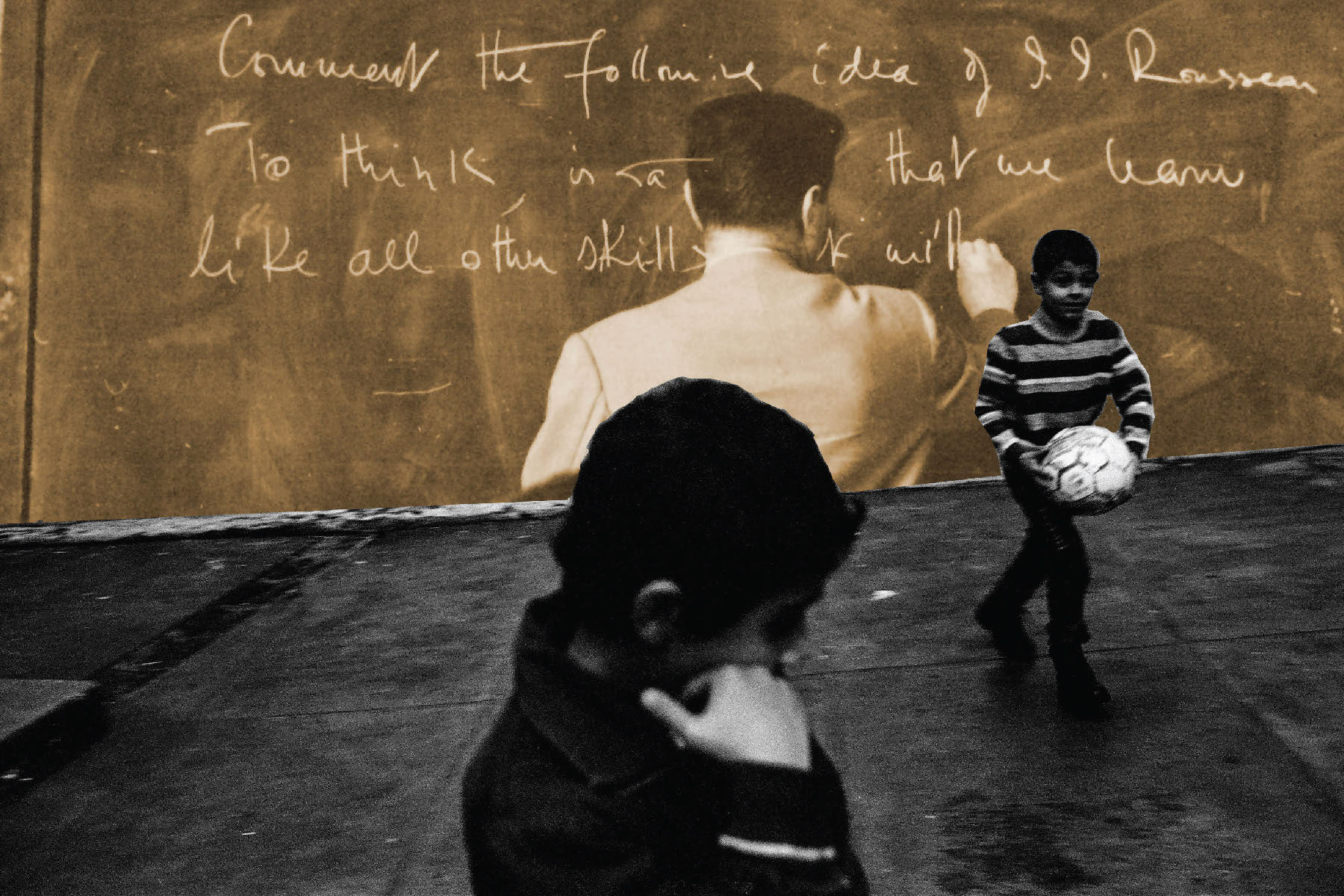In 1975, my family and I fled Beirut as the civil war raged. I remember driving down the highway connecting the city to the airport at ungodly speeds to avoid sniper fire. That deserted stretch of uninterrupted road is vivid in my memory: it represents a disruption of place, family and history. As the war tore apart the country, it also drove my parents to divorce. A war, a physical displacement, cascading into a familial one, into a personal one. Forty years on, their effects only deepen and compound.
“The Beirut Memory Project” is a layered speculation that straddles this rupture through image-based collage. The black & white parts of the images are from Oshagan’s present-day photographs from Beirut. The fabric of those images are disrupted by vernacular color images of pre-war family, community and aftermath of civil war. Structurally, the work is seen from today while embedding in that present what came before: a construction that looks back across a divide, across decades of rupture, absence, war, memory and loss. How to reconcile, how to mend? How to cross this abyss of displacement? It seeks to construct a speculative bridge, to begin a process of healing and questioning the arc of time and history that connects linear and non-linear narratives.
My and my communities' history seems to have a wretched a pattern. A generation earlier, my grandparents were driven out of their homeland by the Armenian Genocide: their displacement accompanied the near destruction of their whole nation. Generation after generation, disruption upon disruption.
The series is printed on mulberry-based paper. The mulberry has its own disrupted history in the region: it used to be plentiful until it was replaced by citrus and fruit trees.
